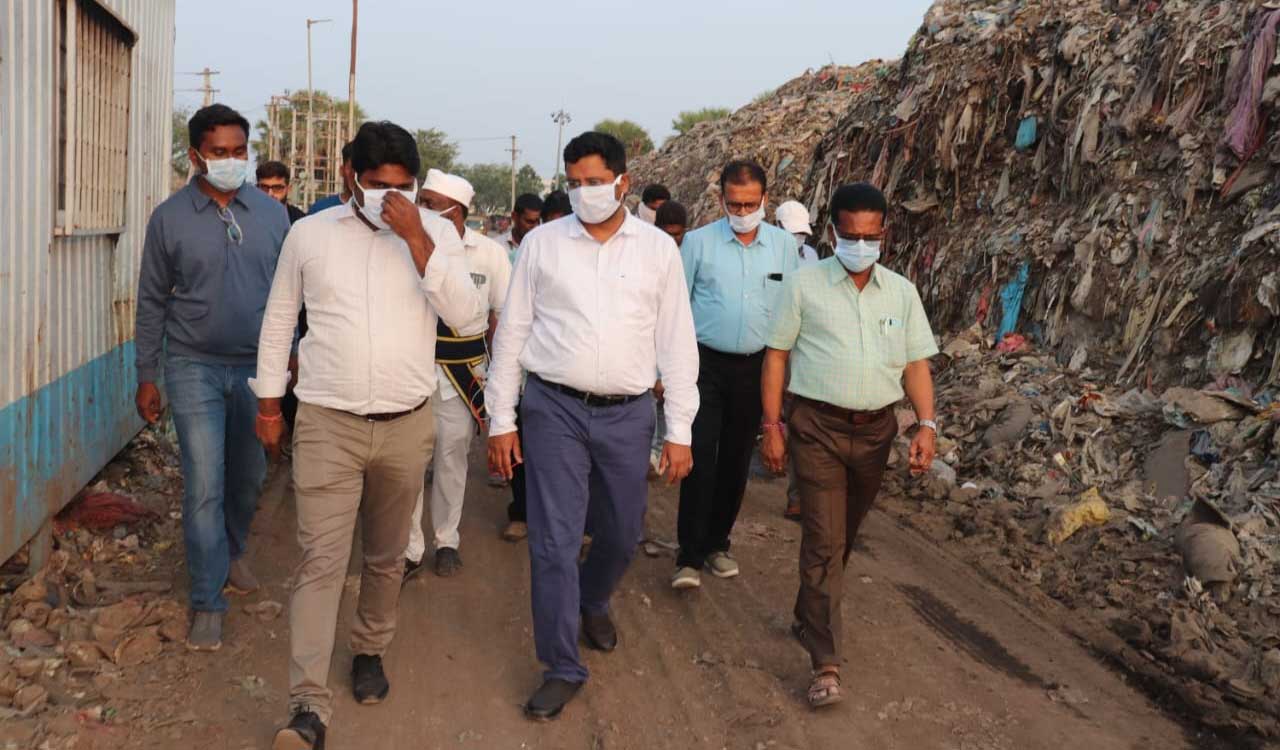The long-standing battle against toxic waste at the Kakatiya Solid Waste Management Park at Rampur near here has taken a positive turn with the Greater Warangal Municipal Corporation (GWMC) now successfully running a biomining plant.
Published Date – 04:25 PM, Mon – 18 December 23

GWMC commissioner Rizwanbasha Shaik and other officials inspect the biomining at Rampur
Hanamkonda: The long-standing battle against toxic waste at the Kakatiya Solid Waste Management Park at Rampur near here has taken a positive turn with the Greater Warangal Municipal Corporation (GWMC) now successfully running a biomining plant.
The facility, operational at full capacity, can process 900 metric tons of legacy waste daily. The officials are now focusing on speeding up the process following inordinate delays in processing the waste. Residents, vexed by years of protests and concerns over environmental hazards posed by the city’s dumpsite, have finally heaved a sigh of relief. The biomining process, employing specialized separator machines and sieves, efficiently categorizes waste into soil, plastic, wood, and metal components for further processing.
Earlier, with the GWMC disposing of around 400 metric tons of waste each day in the 31-acre Kakatiya SWM Park, the lack of a proper waste disposal plan had led to burning of garbage, causing severe air, water, and soil pollution in the vicinity. Frustrated locals from Rampur, Madikonda, Narsingaraopalle, and Elkurthi had persistently urged the civic body to relocate the dumpyard.
Meanwhile, GWMC Commissioner Shaikh Rizwanbasha’s directive to expedite the biomining process signals a focused effort to conclude this endeavour by the end of January 2024. During a recent inspection at the 46th division Rampur dumping yard, the Commissioner reviewed the ongoing biomining operations, emphasizing the need for speedy completion.
Presently, of the three lakh metric tonnes of accumulated garbage, approximately 1.5 lakh metric tonnes (about 50%) have already undergone neutralization through biomining. The remaining 1.5 lakh metric tonnes are slated for disposal by January end. To meet this goal, the daily processing capacity has reached 1600 metric tonnes, with plans to augment shifts, machinery, manpower, and resources.
Furthermore, the authorities have stressed adherence to minimum waste management standards during the biomining process. Additionally, they aim to channel the produced by-products and refuse-derived fuels (RDFs) to cement factories, while also educating farmers through the Department of Agriculture on using them as organic fertiliser.


